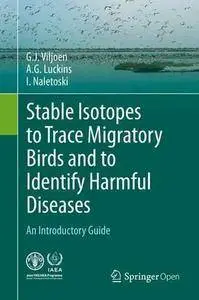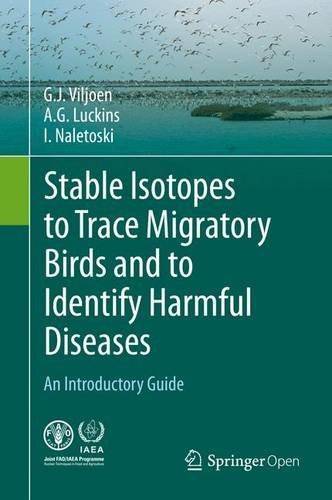Stable Isotopes to Trace Migratory Birds and to Identify Harmful Diseases: An Introductory Guide By G.J. Viljoen, A.G. Luckins, I. Naletoski
2016 | 49 Pages | ISBN: 3319282972 | PDF | 2 MB
2016 | 49 Pages | ISBN: 3319282972 | PDF | 2 MB
This manuscript discusses the potentials of the approaches as mentioned below to monitor the AIVs in WMW. Molecular diagnostic platforms enable for accurate detection of the AIVs in the feces of infected birds. Similar technologies can be used to determine the bird species through DNA barcoding, enabling non-invasive research on the epidemiology of the disease. Wild migratory waterfowl (WMW) play significant role in the transmission of avian influenza viruses (AIVs) on large distances. Understanding bird migrations may therefore significantly contribute towards understanding of the disease epidemiology, however most conventional approaches to trace WMW migrations are based on capturing, tagging (mostly ringing or GPS devices) and their re-capturing to link the departure and arrival places. Stable isotope ratios in metabolically inert tissues (feathers, beaks, claws) reflect the ratios present at the point of intake (drinking or feeding), thus enabling for tracing bird origins at stopover places. Molecular diagnostic platforms such as the polymerase chain reaction (PCR) enable for accurate detection of the AIVs in the feces of infected birds. Similar technologies (genetic sequencing) can be used to determine the bird species through DNA barcoding. Simple and easy collection of feather and fecal samples at the stopover places may generate a full information package on which species of WMW carries the AIVs (PCR+DNA barcoding on the feces), as well as the origin of these species (SI+DNA barcoding on the feathers). Therefore, such approaches enable for research on the epidemiology and the ecology of the AIVs in WMW using a non-invasive platform, which does not require capturing of WMW. This manuscript discusses the potentials of these approaches to monitor the AIVs in WMW.



